The labyrinth in its simplest form is one with 3 circuits. For some people it is not a “real” labyrinth because the path is leading directly into the centre without being closer and then farther away from it.
As there is no universally valid definition for the labyrinth, we may nevertheless consider this labyrinth as a real one.
How do we get one?
The basic pattern to make a 7-circuit classical labyrinth is known, in the meantime, probably by all readers of this blog. (If not, please take a look here.)
No 3-circuit historical labyrinths are known, it is made from a reduction of the basic pattern. If one omits the four angles, only the cross and the four dots are remaining.
This reminds a little: Dot, dot, comma, dash – smiley face in a flash :-). However, it is really so simple to make a labyrinth, and this is why it is a child’s play to draw one this way.
Tip for right hander: Begin at the left end. Left-handed persons are beginning at the right end. The lines may become crooked.
Here a few examples of 3-circuit labyrinths:
The first picture shows a gem of Alexander Lautenbacher.
The central picture shows the shoe labyrinth from Schwäbisch Hall. The four “shoe lines” are beginning in the central intersection point.
The last picture shows the graphic on the invitation card from the Labyrinth Society for the Gathering this year.

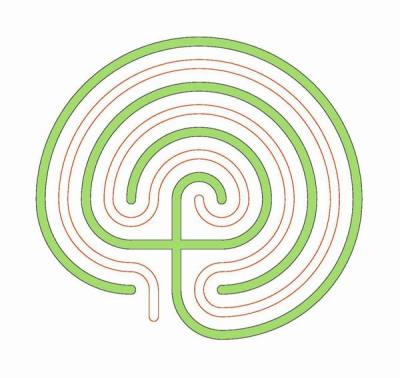
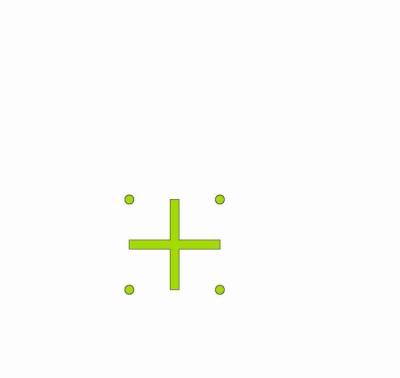
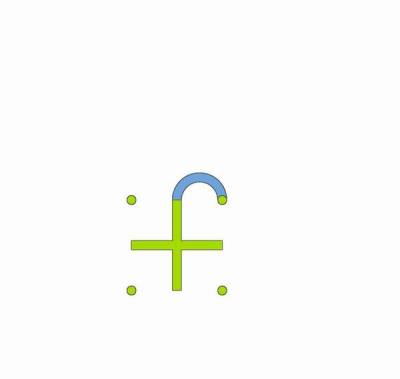



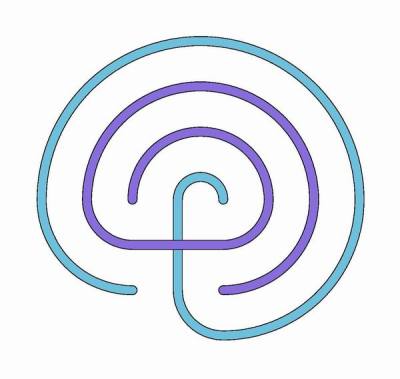

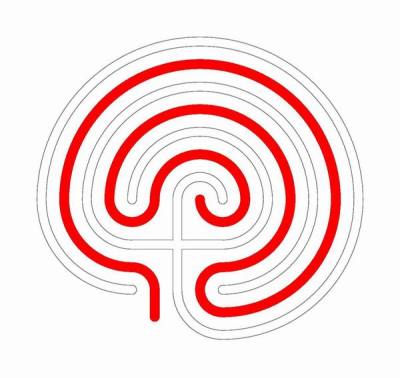
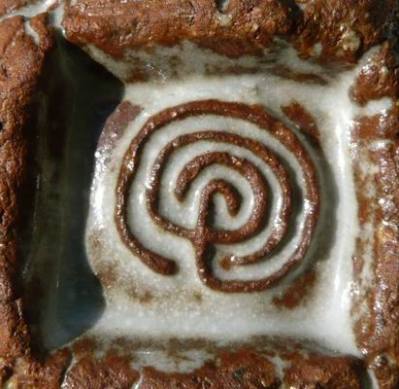
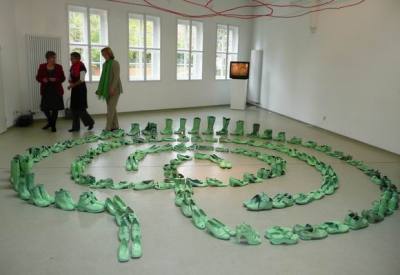

Thank you for this wonderful blog. May I use an image for my website? I love Labyrinths, the insights they give changed my life.
LikeLike
Thank you. Surely you can do that. 😉
LikeLike
Pingback: Family Faith Practices – Journeying Toward God with a Labyrinth | kayebledsoe
Pingback: How to Draw Variations on the Snail Shell Labyrinth, Part 4 | blogmymaze
Pingback: How to Draw Variations on the Snail Shell Labyrinth, Part 3 | blogmymaze
Pingback: The Classical 3 Circuit Labyrinth Type Knossos « blogmymaze
hi Erwin, the 3-circuit labyrinth can also be formed from this basic frame:
. ) | ( .
the 5-circuit labyrinth basis is this:
. ) ) | ( ( .
the baltic wheel 7-circuit labyrinth’s seed pattern is:
. ) ) ) | ( ( ( .
and so on, to form any odd-numbered-path labyrinth. the ‘trouble’ with this is that the labyrinth will have the first half of the u-turns all to the left, the the rest of the labyrinth turns turning to the right.
hello friend on the path
LikeLiked by 1 person
Thank you, Alana, to tell us this.
Let me say that making a labyrinth with those pattern leads the first path inside immediately round the center. And the last and outhermost path immediately into the center. So it is a labyrinth with a very special rhythm.
LikeLike
Dear SJL,
thank you to share your experiences with the whole world.
I will have to visit your blog more often.
And naturally I invite others to do so.
LikeLike
I just came across your blog today.
It is wonderfully rich.
I have started a journey of sorts with the labyrinth. You are most welcome to visit my blog where I write about it:
http://everydaylabyrinth.wordpress.com/
Best wishes,
SJL
LikeLike